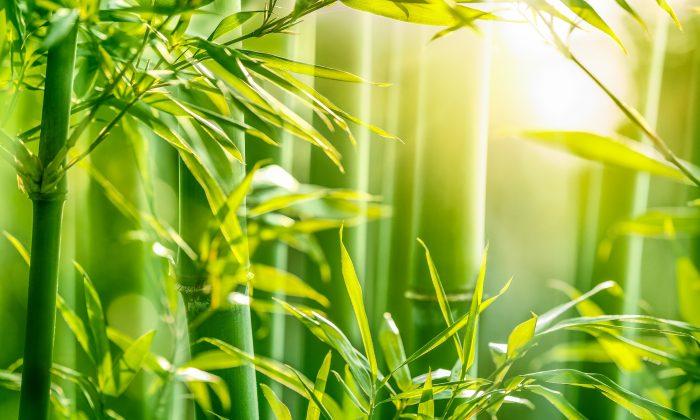Considered an invasive species by some, bamboo is a panda’s favorite treat. It is the king of grasses and offers significant, multi-faceted health benefits and endless practical uses. Bamboo serves us on so many levels, from supporting hair and nails, and building collagen, to rejuvenating skin and joints, to framing houses, creating furniture, and far more. Bamboo has proven itself as a resource for sustainable products and as a supreme provider.
Bamboo’s Background
Recorded as being consumed by the Chinese during the Ming Dynasty (A.D. 1368–1644) and found mentioned in a note from the Tang Dynasty (A.D. 618–907), bamboo is one of the most useful plants on the planet. The tallest member of the grass family, bamboo is from the Bambusoideae subfamily. Taxonomically, there are 1,641 bamboo species, 120 genera, and three tribes from this subfamily.Bamboo is characterized by its strong but flexible upright growth. It can reach astounding heights for a plant considered grass and can grow several feet per day. Over a longer stretch, that growth may vary, but a single cane can grow to 25 feet in 25 days.
Bamboo spreads vigorously, taking territory vertically as well as horizontally. The weight of heavy, wet snow merely displays its incredible flexibility as it bends nearly flat only to spring up tall again once the snow melts.
Eating and Drinking Bamboo
Why drink plain water when you can turn it into a herbal pharmacy in a cup? Bamboo leaves make an herbal decoction that tastes great—like an earthy green tea—and can easily become your daily health-habit ritual either taken alone or mixed with other herbal teas such as jasmine and mint in creative, exotic blends.Young bamboo shoots, harvested within two weeks after emerging and under a foot tall, are a staple in Asian countries such as the Philippines, India, Nepal, Japan, Indonesia, Thailand, Korea, and of course, China. Boiled to just crisp-tender, these highly versatile shoots take on other flavors. They are available at Asian markets canned or fresh.
Growing Bamboo
On my own land, a few gallon pots of bamboo planted several years ago have now morphed into a veritable forest both in height and in terrain covered. For this reason, many gardeners contain bamboo plants in a concrete trench or other boundaries.Because of its high glass-like silica content, cutting bamboo cane isn’t easy but anyone can easily harvest its leaves. My fresh, organic leaves harvested this morning are dehydrating to use in tea, tea that costs approximately $6.55 per ounce in stores.
Bamboo’s Benefits
Amazingly, this innocuous, ancient plant is a powerhouse of amino acids, fatty acids, vitamins, minerals, chlorophyll, soluble fiber, and carbohydrates. Medicinally, bamboo is cooling and calming. In addition to the uses listed above is it also good for digestion, obesity, lung, chest, stomach, heart, and urinary dysfunction.It is also detoxifying and can quell inflammation. Bamboo leaves and shoots are important for male fertility, influencing thyroid hormones, balancing blood sugar levels, and they are a powerful antioxidant that can reduce cellular damage. Bamboo is good for bone and dental health and promotes general overall wellness. It is antibacterial and helps in asthma cases, too.
Lignins are a complex organic polymer deposited in the cell walls of many plants, including bamboo, making them rigid and woody. Lig-8, a lignophenol derivative from bamboo lignin, is a highly potent neuroprotectant protecting against apoptosis, a form of self-induced cell death.
With bamboo’s many benefits, you may want to find ways to include bamboo leaves and shoots in your diet. As with any natural substance, add the factor of time, typically a few months, in order to register benefits.
But beneath the surface, and likely beneath your notice, the king of grasses could restore your health on the cellular level—and with a great deal of pleasure in the process. Processing the bamboo leaf by dehydration doesn’t take long at all, which means you could go from harvest to cup quicker than you might think.
Here’s to inexpensive, sustainable health in a cup!


